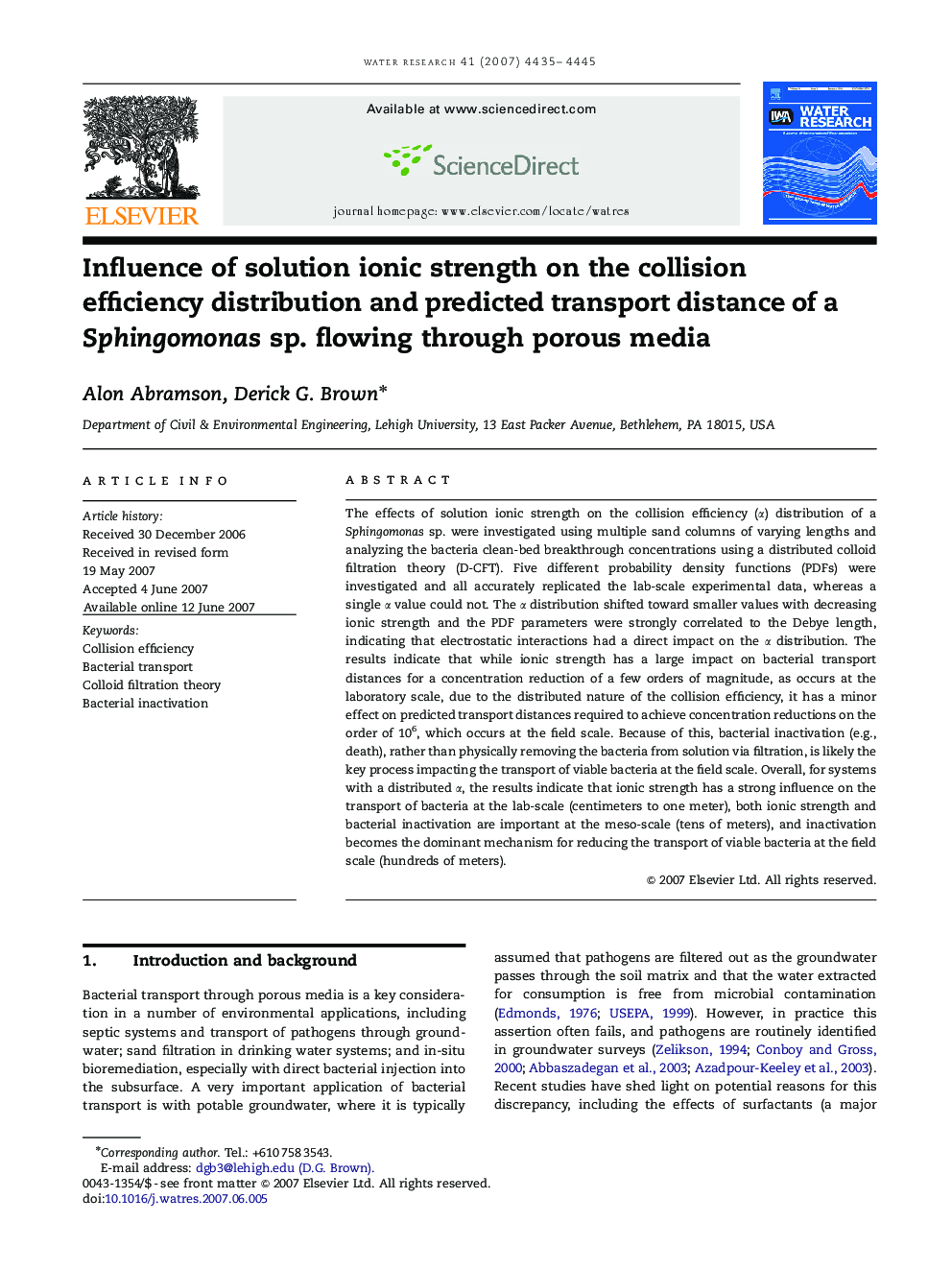| کد مقاله | کد نشریه | سال انتشار | مقاله انگلیسی | نسخه تمام متن |
|---|---|---|---|---|
| 4485254 | 1316946 | 2007 | 11 صفحه PDF | دانلود رایگان |

The effects of solution ionic strength on the collision efficiency (α) distribution of a Sphingomonas sp. were investigated using multiple sand columns of varying lengths and analyzing the bacteria clean-bed breakthrough concentrations using a distributed colloid filtration theory (D-CFT). Five different probability density functions (PDFs) were investigated and all accurately replicated the lab-scale experimental data, whereas a single α value could not. The α distribution shifted toward smaller values with decreasing ionic strength and the PDF parameters were strongly correlated to the Debye length, indicating that electrostatic interactions had a direct impact on the α distribution. The results indicate that while ionic strength has a large impact on bacterial transport distances for a concentration reduction of a few orders of magnitude, as occurs at the laboratory scale, due to the distributed nature of the collision efficiency, it has a minor effect on predicted transport distances required to achieve concentration reductions on the order of 106, which occurs at the field scale. Because of this, bacterial inactivation (e.g., death), rather than physically removing the bacteria from solution via filtration, is likely the key process impacting the transport of viable bacteria at the field scale. Overall, for systems with a distributed α, the results indicate that ionic strength has a strong influence on the transport of bacteria at the lab-scale (centimeters to one meter), both ionic strength and bacterial inactivation are important at the meso-scale (tens of meters), and inactivation becomes the dominant mechanism for reducing the transport of viable bacteria at the field scale (hundreds of meters).
Journal: Water Research - Volume 41, Issue 19, November 2007, Pages 4435–4445